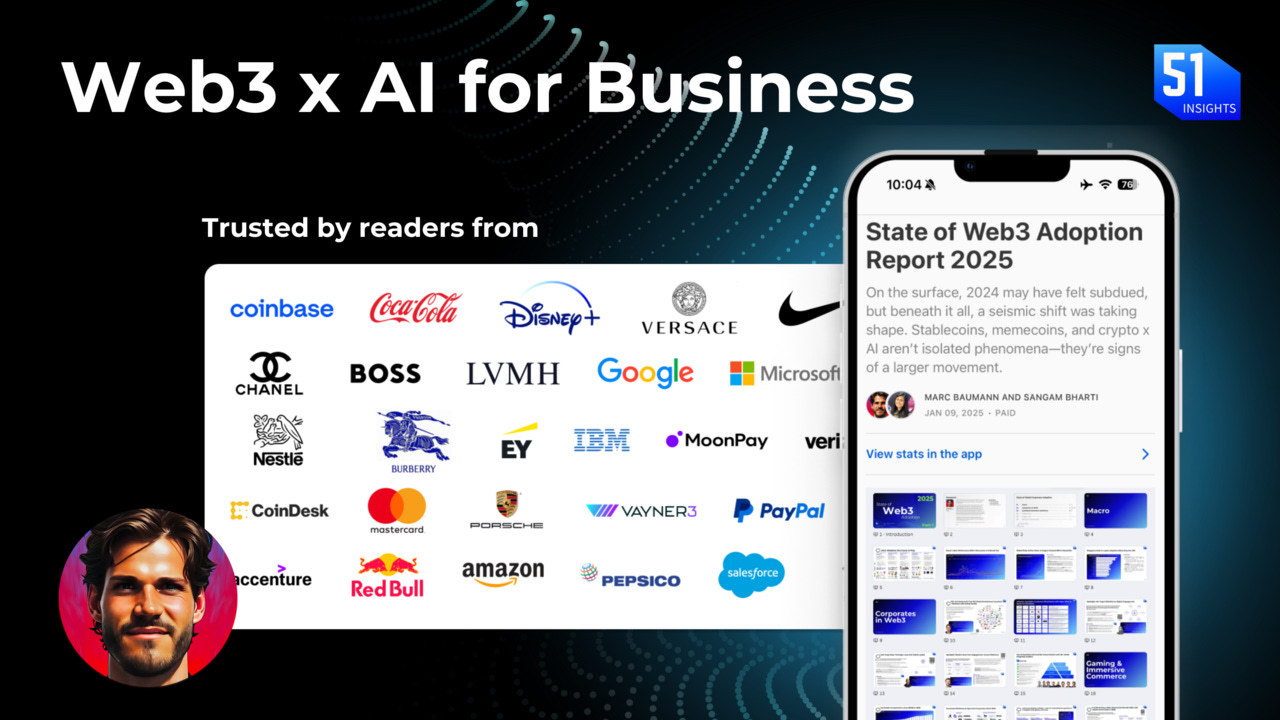
51 Insights – Web3 x AI for Business
We break down how Web3, crypto & AI is impacting business. Join 20k+ execs, industry operators & investors already benefiting (it’s free). 👇
By subscribing, I agree to Substack’s Terms of Use and acknowledge its Information Collection Notice and Privacy Policy
“FiftyOne Insights is a premier resource on Web3, helping marketing leaders in growing their business.
Marc Baumann, the author of FiftyOne Insights, is a great ambassador for our space, and a trusted voice for valuable content. ”
Michael Nadeau, The DeFi Report
“Dematerialzd is a high-quality resource for marketing leaders to understand and use web3 to grow their brands! Highly recommended”
Safary, Growing Web3 by Safary 🦁
“The best research on Web3 for business leaders. Period. ”
Marc Baumann, 51x - Crypto x AI